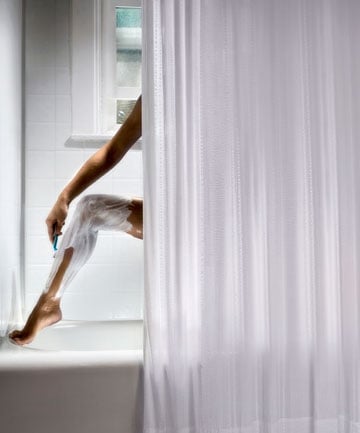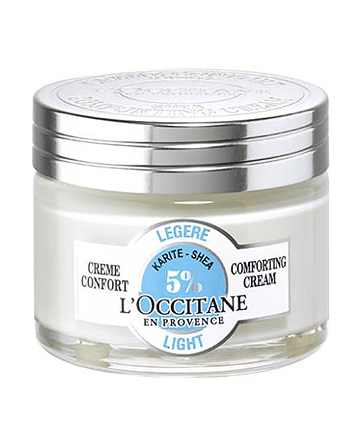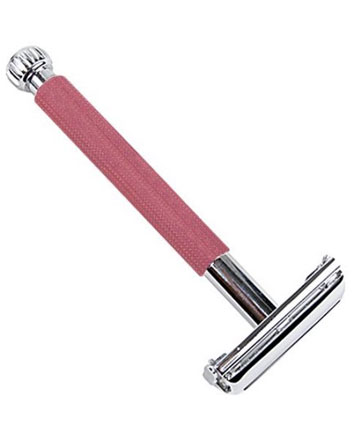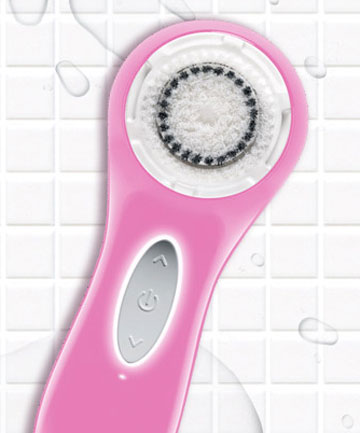If you're on a beach vacation you'll probably want to shave daily, but this shouldn't be your normal regimen. Shaving too often doesn't allow your skin the time it needs to recover from the harsh blade, says Debra Jaliman, M.D., board-certified NYC dermatologist, assistant professor of dermatology at Icahn School of Medicine at Mount Sinai and author of Skin Rules.
Jaliman also advises her patients to shave towards the end of their shower when the hairs are hydrated. "Using warm water during your shower allows the pores to be wide open for close, clean shaves that minimize skin irritation and ingrown hairs," she says. "The steam causes pores to relax and skin to soften, allowing the blade to move seamlessly across your skin."
Image via Getty
Jaliman also advises her patients to shave towards the end of their shower when the hairs are hydrated. "Using warm water during your shower allows the pores to be wide open for close, clean shaves that minimize skin irritation and ingrown hairs," she says. "The steam causes pores to relax and skin to soften, allowing the blade to move seamlessly across your skin."
Image via Getty
When you break down the act of shaving—an interaction between the razor, hair and skin—you start to realize how harsh the process is. For this reason, how you treat the skin after shaving can significantly impact healing and whether you will develop ingrown hairs. "While the skin feels smooth to touch, at the microscopic levels, it is full of peak and valleys, which may become disrupted from the shaving process," Zeichner explains. "When the skin barrier becomes damaged, it may lead to inflammation that can increase your risk of developing ingrown hairs." After shaving, he recommends applying a protective post-shave moisturizer. He suggests opting for a light and easy formula, like Vaseline Intensive Care Advanced Repair Unscented Lotion ($8) or L'Occitane Shea Butter Light Comforting Cream ($29), that won't leave you feeling greasy.
You might think the more blades the better, but dermatologists warn that the more blades a razor has the more likely you'll experience irritation. "Multiple blades cause the hair to lift and cut the hair underneath the skin," Lily Talakoub, M.D., Dermatologist at McLean Dermatology tells us. "When it is under the skin and it grows out, the hair can get stuck." Reach for a blade that has fewer than two blades to reduce your chances of ingrown hairs.
Image via Parker
Image via Parker
You know the importance of exfoliating your face to get rid of the dead cells that leave skin looking dull. But it's also important to exfoliate the skin on your body, especially areas you shave. "This clears away dead skin and leaves you ready to eliminate unwanted hairs," Jaliman explains. She recommends exfoliating with a slightly abrasive cloth or a machine like the Clarisonic that vibrates the skin to get rid of the dead cells on the surface.
Laser hair removal permanently destroys trapped hair follicles so you'll never have to deal with ingrown hairs again. "Laser hair removal targets the pigment at the base of the hair follicle," explains Talakoub. "Lasering a stuck hair will disrupt the follicle, singe (i.e. lightly burn) the hair and eventually your body will either dissolve the hair or release it to the top layer of the skin." For best results, visit a professional—be it a dermatologist or someone licensed to perform laser hair removal like an esthetician. "Shave two days prior to lasering so hair stubble is slightly visible," she adds.
Image via Getty
Image via Getty









